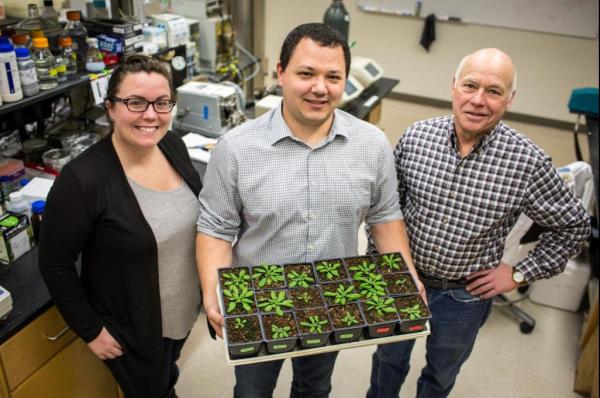
March 31 (UPI) — A study at the University of Illinois at Urbana-Champaign has shown that a newly characterized protein could protect plants from toxicity, potentially saving U.S. farmers millions annually.
A problem in agriculture is many plants make a plant-toxic compound during photosynthesis instead of turning carbon into food. This plant-toxic compound is then recycled through a process called photorespiration.
Researchers at the University of Illinois discovered a key protein in photorespiration they say may be manipulated to increase plant productivity.
“Photorespiration is essential for C3 plants, such as rice and soybeans, but operates at the massive expense of fixed carbon and energy,” Don Ort, a USDA/ARS scientist and professor of plant biology at the University of Illinois, said in a press release .”We have identified photorespiration as a primary target to improve photosynthetic efficiency as a strategy to improve crop yield. Successfully re-engineering photorespiration requires deep knowledge of the process, for which understanding of transport steps is most lacking.”
Researchers found the plant protein Bile Acid Sodium Symporter 6, or BASS6, transports the toxic product glycolate out of the chloroplast where it is recycled into a useful sugar molecule. The useful molecules, called glycerates, release carbon dioxide and harmful ammonia while sacrificing energy.
It has been long known that plant chloroplasts export two molecules of glycolate to recover one molecule of glycerate, however, the chemical equation did not make sense until the discovery of the function of BASS6.
“Now we’re going to try to make a shortcut to avoid all the wasteful steps in photorespiration,” said Paul South, a USDA/ARS postdoctoral researcher at the Carl R. Woese Institute for Genomic Biology at Illinois. “We’re building a shortcut to quickly process glycolate into glycerate instead of letting BASS6 and PLGG1 take the country roads. One of the benefits of the shortcut is that the plants don’t produce ammonia, so they didn’t have to spend a lot of energy re-fixing the ammonia.”
The study was published in Plant Cell.
“We could feed around 200 million people with the calories lost to photorespiration each year in the Midwestern United States,” Berkley Walker, of the University of Dusseldorf, said. “While we can’t get all that yield back, even saving 5 percent of the energy lost in photorespiration would be worth millions of dollars annually.”


